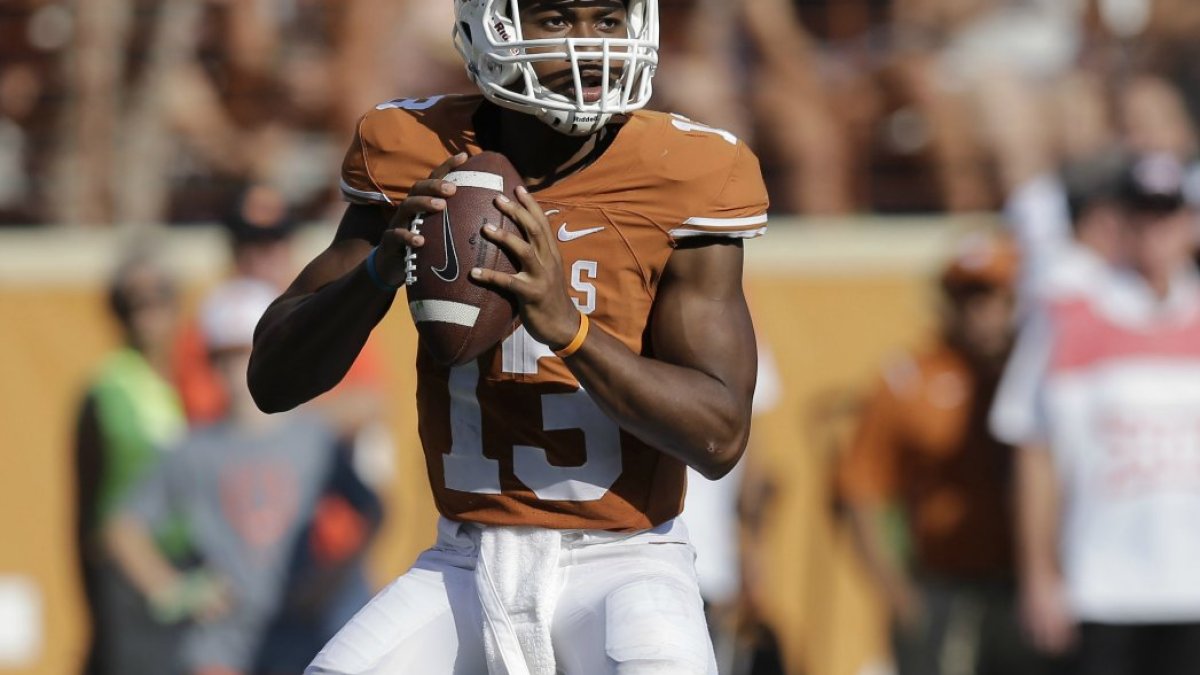The Longhorns' victory over Oklahoma was nothing short of remarkable. On Saturday morning Charlie Strong's team was in the deepest of holes, with unrest in the fan base and open speculation about the warmth of his seat. A few hours later Strong was wearing the Golden Hat and crowd surfing in the Cotton Bowl in celebration of a thoroughly deserved Red River Rivalry victory.
Rivalry games can throw up the craziest results, where plucky performances, freakish plays and uncharacteristic dominance upset the form book. But that doesn't adequately describe this Texas victory. Rather than looking like the underdog, the Longhorns played like the favorite, taking an early lead and never looking like losing it on their way to a 24-17 victory that was more convincing than the score line suggests.
Oklahoma had averaged 42 points per game through the first four weeks, but were held to less than half that by a Texas defense that dominated the line of scrimmage, despite playing with at least five recognized defensive backs for all but two snaps. Of the six offensive linemen who involved for the Sooners, only one — RT Josiah St. John — emerged with a positive overall grade (+0.6), and five of the six (including St. John) graded out at -1.1 or worse in pass protection.
Linebacker Peter Jinkens (+4.4 overall grade ) was particularly impressive, earning a +3.1 grade in run defense, his best performance. Defensive end Bryce Cottrell (+2.4), and defensive tackles Hassan Ridgeway (+3.4) and Poona Ford (+1.8) combined for two sacks and eight pressures. Ridgeway and Ford made notable impressions and despite being limited by injuries, both are expected to be be available again after the Longhorns' bye.
Offensively the Longhorns changed things up, throwing the ball just 12 times for 55 yards, and instead relying on the ground game, which trundled along for 313 yards. Senior RB Johnathan Gray (-2.1 rushing grade) did the grunt work, but QB Jerrod Heard (+2.1 rushing grade) and RB D'Onta Foreman (+1.7 rushing grade) provided the big-play threat. Heard averaged seven yards per carry on designed runs, taking full advantage of any space he was offered. Foreman averaged 13.0 yards per carry, thanks largely to his 81-yard effort.
It was a game plan built on two key elements — a disruptive defense and a productive ground game. That is a blueprint the Longhorns can replicate to show that this performance is much more representative of the team they are than what had been on display before.
While it was the run game that starred on offense, Heard has also flashed talent as a passer. Over time that aspect of the offense can evolve to make the Longhorns a more rounded team, but for now they can focus on what works best — running the ball. Moreover, in the pass-happy Big 12, there is value in being different. Defensive schemes have adjusted in an attempt to cope with the conference's high-octane spread offenses — running it right at them offers up a very different challenge.


 © 2024 PFF - all rights reserved.
© 2024 PFF - all rights reserved.